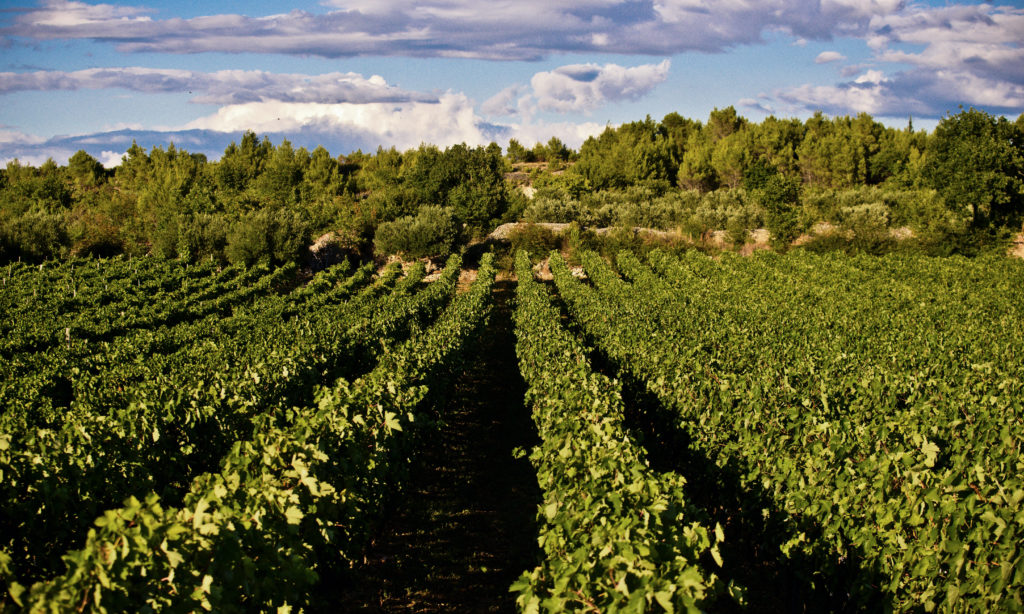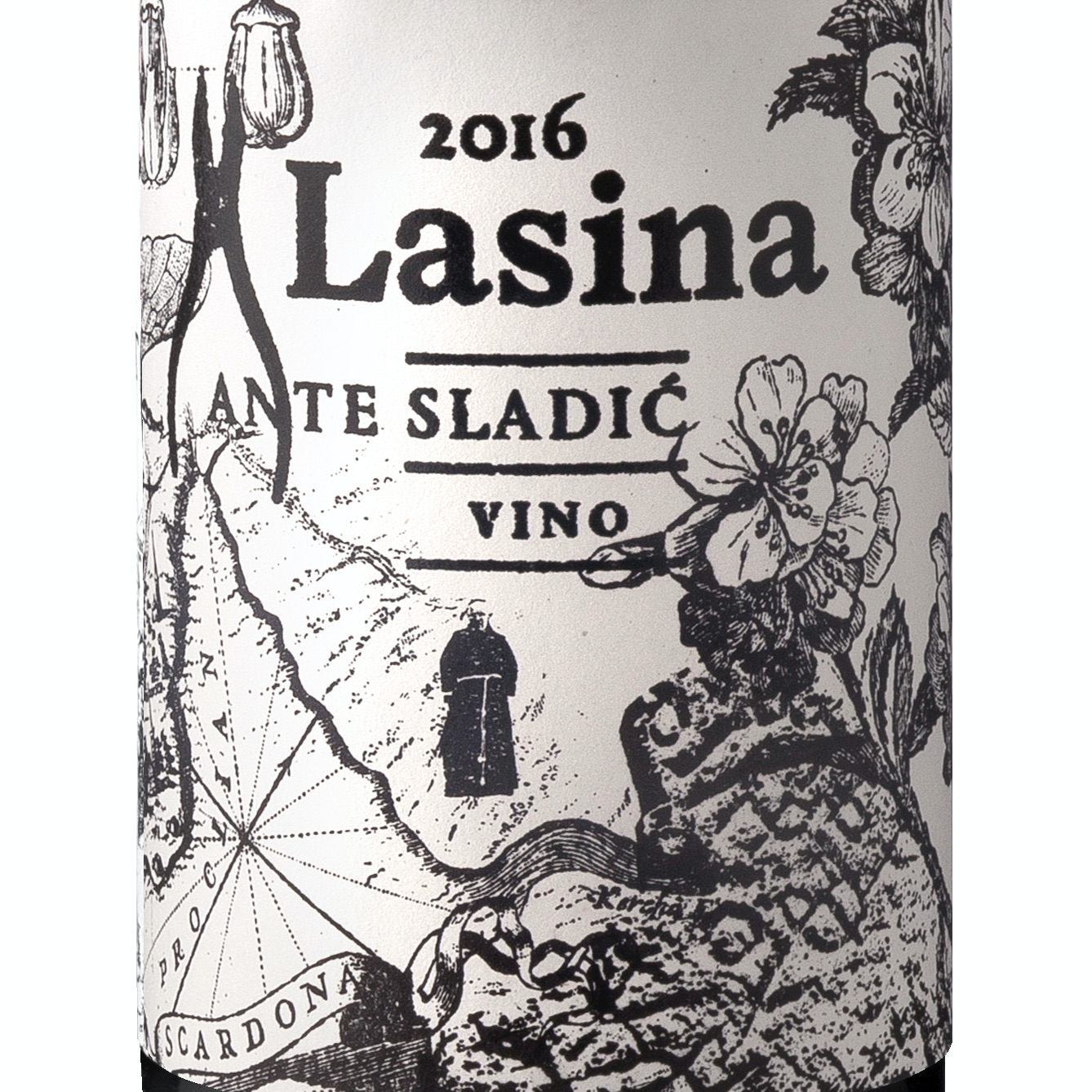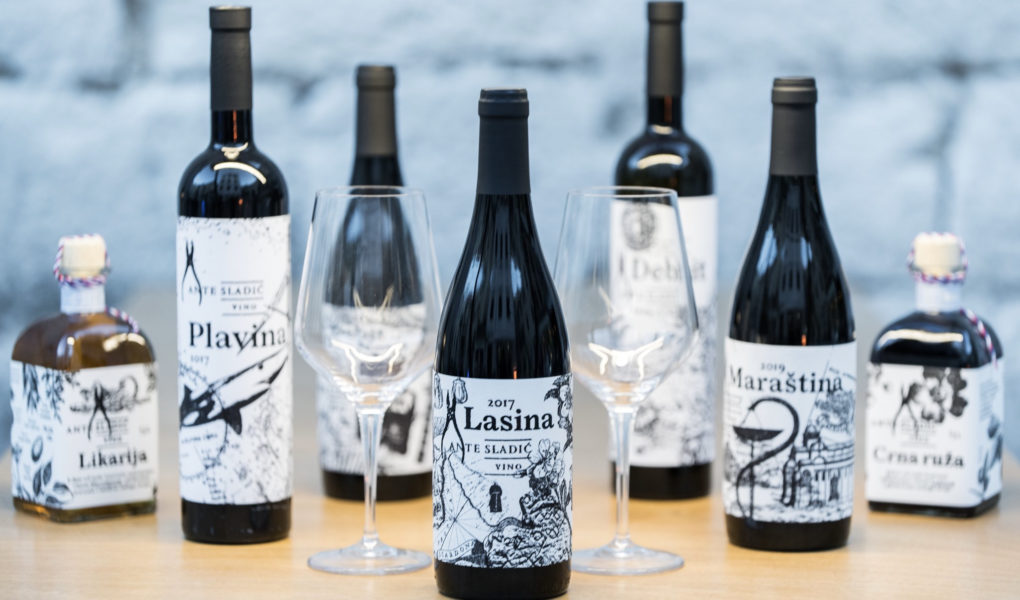Renowned Croatian wine writer Saša Špiranec once dubbed Lasina “the Pinot Noir of Dalmatia.” While this comparison allows those enological explorers new to the obscure grapes of Croatia a fair point of reference, I think it does a disservice to this rare, uniquely compelling grape. Lasina, an iconoclast among Dalmatian black grapes, is light bodied, with low alcohol and racy acidity. This is a wine grape that should be taken on its own merits.
Lasina is indigenous to the Krka river valley and surrounding plateaus, and is not found anywhere other than its ancestral environs. Here, the river’s influence creates the perfect macroclimate; this is one of the few areas of Dalmatia with dramatic diurnal temperature swings in those persistently hot days of summer.
Only a handful of producers work with and bottle Lasina (also called Lasin) as a single varietal. Among them, Ante Sladić is doing transcendent things with this fickle, less known, yet worthy grape. I first met Ante in November of 2018, when I visited his winery in the tiny village of Plastovo, just a few kilometers from Skradin, on the plateau above the Krka river. On a road fittingly called Sladići, I had accidentally pulled into the other Sladić winery, just a couple doors down from Ante’s, and been worried that no one was coming. Luckily, I found Ante crossing the street, looking for me. This meeting began my love affair with this rarest of Dalmatian grapes.
Four years later, I returned to Plastovo to spend the afternoon with Ante, talking about Lasina, snacking on homemade rustic bread, his father’s beautifully striated, unctuous pancetta, local cheeses and olives from their small grove, and, of course, drinking his range of wines—he also produces Debit, Maraština, Plavina and Lasina Opol, a rosé wine. Ante Sladić wants his wines to tell the stories of the hyper-local, indigenous grapes from which they are made.

Producing only up to 2,000 bottles of Lasina per vintage—depending on the harvest—it’s easy to figure just how rare this variety is. It’s a fickle grape in the vineyard, Ante tells me, because the vines produce an overabundance of leaves, which need to be plucked by hand. “When you’ve been picking leaves from the vines for two hours and look back to see that you’ve only moved a few meters, it can be disheartening,” Ante says. But that careful labor is worth the reward. It is also tricky in the cellar, he laments. Because of its high acidity and low sugars, it takes a deft hand to create a harmonious wine. Its lean elegance proves a welcome counterpoint to the overwhelmingly robust, high-alcohol, low-acidity red wines most common to Dalmatia. I tell Ante that I’ve been drinking wine with a group of guys in Split, and their palates tend to privilege those big wines. I, however, also enjoy lighter, mouthwatering wines that really shine with food. Ante and I agree that both styles have their place in the Croatian winescape.

Still more of Lasina’s story plays out on Ante’s labels, which bear a pastiche of historical references for each of his wines. On the Lasina bottle, we see the development of the grapevine flower; a honey bee; Father Lujo Marun of Skradin, the pioneer of Croatian archaeology; a shard of ancient Roman map, marking Scardona, the Latin name of Skradin, and Prokljan lake; a stone tablet, the 11th-century Plastovo Fragment, which is inscribed in early Croatian alphabets (Glagolitic and Cyrillic); and almond flowers, one of Lasina’s signature aromas. It’s a kind of tasteful imagistic maximalism that lets you know you’re embarking on a journey each time you pick up a bottle.
When you pour the current release, the 2018 vintage, it is fine ruby in color—as close to the liquid state of the coveted gemstone as you can get. On the nose, it is a bit austere at first, then it slowly reveals notes of raspberries, dusty earth, sage, dried rose petals, almond flowers, and just a dash of white pepper. Though Lasina is a relative of Crljenak Kaštelanski (Zinfandel), you’d never know it. In fact, it’s best to forget what you know, and just let this wine tell you on its own terms.
On the palate, it is laser-focused, light to medium bodied, soft on the approach, with an acidity on the finish that sends the salivary glands into a frenzy. This is an elegant wine. Like a silk gown obscuring a dagger. Pure red fruit, garrigue, tart rose hips, and very gentle but perceptible tannins precede a lively finish that screams for food. And you must oblige, lest you quickly find the bottom of the bottle. The 2016 and 2017 vintages show impressive aging potential and development of flavors without losing any of the brightness of this young wine.
Highlighting this vivid freshness, Ante also makes a rosé from grapes grown in his newer vineyard above Prokljan lake, called Lasina Opol (opol is the traditional Dalmatian name for pink wines). Four years ago, I tasted an early vintage of this rosé from the tank, and was blown away. Think watermelon Jolly Rancher, wild strawberry, dried roses, and sea salt minerality. It’s that classic bait-and-switch I love in a rosé: almost sweet on the nose, but bone dry on the tongue. From young vines, grown in more fertile soil, this expression of Lasina is an immediate transport to summer, which, if you’re in Dalmatia, means swimming in the crystal-clear Adriatic, swimming against the tide of tourists through narrow pedestrian streets, and cooling down with your favorite bottle of chilled wine.
Lasina, like so many rare Croatian varieties, truly shines when discovered at its origin, where you can disappear into the stories that these wines tell. From the Roman encampment at Burnum, to the roaring waterfalls at Krka National Park, to the families who’ve tended this land for generations, all the complexities of a place come together in its fruit. That’s really what wine is about, after all: opening your senses to a time and place and the people that preserve it to be revealed at a later date, at the pop of the cork and that unmistakable sound of wine being poured into a glass.
Other Producers of Lasina
Bibich Vino
Vina Sladić
Boškinac (Pag)
For information about visiting Ante Sladić Vino or other producers of Lasina, use our Winery Finder Tool.
[Title photo: Courtesy Ante Sladić Vino]
James Meetze [Metz] is the award-winning author of five books of poetry, a professor of writing and film studies and an autodidact oenophile. Since 2017, he has been dividing his time between San Diego, California, and Split, Croatia, where he now lives, listens, tastes and writes. Follow his wine adventures on Instagram @wineversed.

